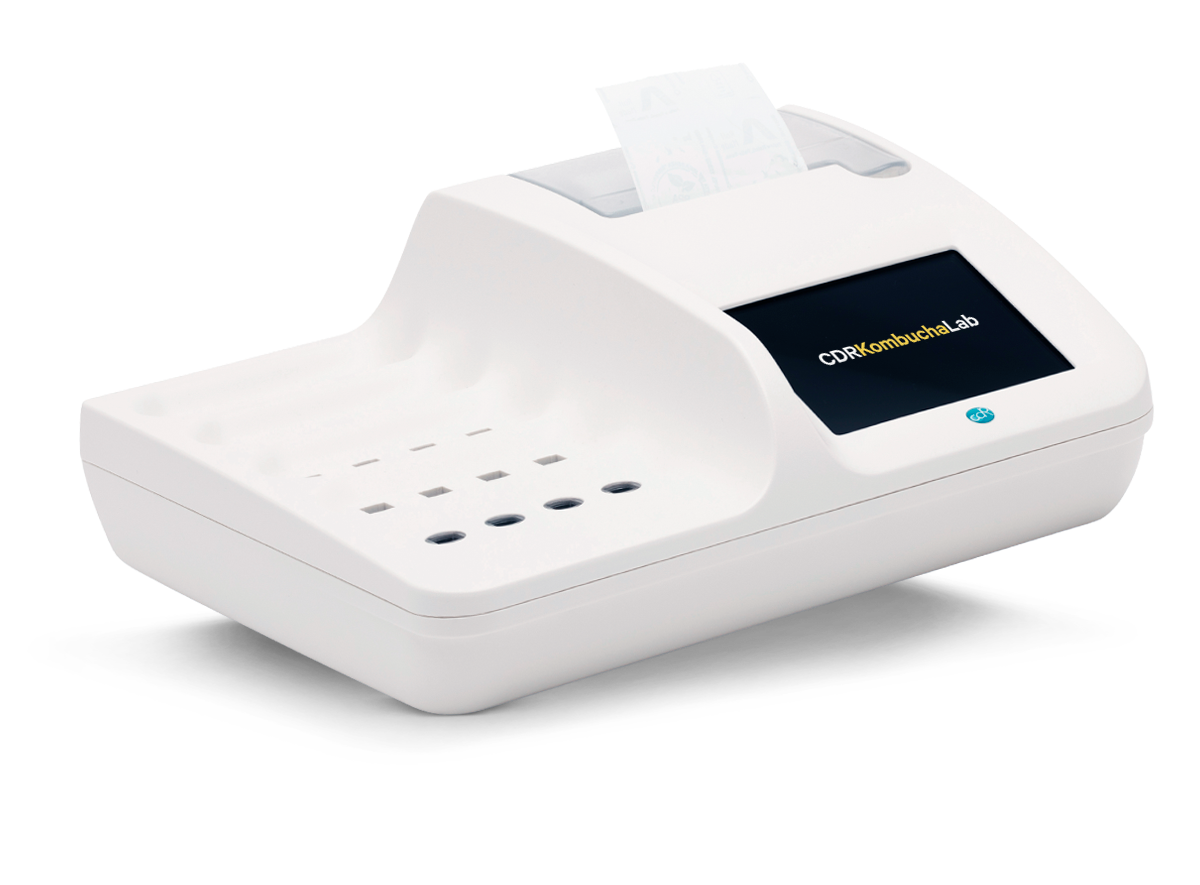Determination of Yeast Assimilable Nitrogen (YAN) in Kombucha
The symbiotic culture of acetic and yeast bacteria immersed in the sweetened tea infusion triggers an alcoholic fermentation. This fermentation can be favoured by the presence of assimilable nitrogen (organic and inorganic) which can be added before fermentation starts. The quantity of assimilable nitrogen can also be controlled during the fermentation process itself in order to guarantee a complete evolution of the fermentation avoiding undesired organoleptic deviations in the finished product.
Method
Test Principle
Organic nitrogen (α – amino nitrogen) and inorganic nitrogen (ammonium ion) are determined separately. In the presence of ammonium and NADH the glutamate dehydrogenase (Gl-DH) reacts with α-keto glutarate to form L-glutamic acid and NAD+. The decrease in absorbance, measured at 366 nm (end-point), of the NADH solution is proportional to the quantity of Inorganic Nitrogen present in the sample expressed in mg/L.
The Organic Nitrogen (α-amino) reacts in the presence of N-acetyl-L-cysteine with the o-phthalaldehyde forming an isoindolic derivative. The difference in absorbance, measured at 366 nm (end-point) is correlated with the quantity of organic nitrogen expressed in mg/L.
Calibration Curve
The calibration curve of the CDR KombuchaLab instrument, carried out using the known concentration of isoleucine for the organic nitrogen and ammonium chloride for inorganic nitrogen, confirmed an excellent linearity of the system over the entire measurement range.
...
...
Reagent test Kits
Please note: Organic (*301430, *301435) and Inorganic Nitrogen (*301440, *301445) kits must be used together.
Measuring range
| Analyses | Measuring range | Resolution | Repeatability |
|---|
The Analyzers for process and quality control in kombucha brewing
CDR KombuchaLab
- Complete analysis panel, supplied already configured
- Up to 16 determinations simultaneously
- Possibility of carrying out analyses of the same sample
- Integrated printer
- Full connections (LAN - USB - Bluetooth barcode/QR code reader)
CDR KombuchaLab Jr
- Partial analysis panel, supplied configured with 3 analyses of your choice, implementable
- Up to 3 determinations simultaneously
- Wireless connection to external printer
- USB connections
